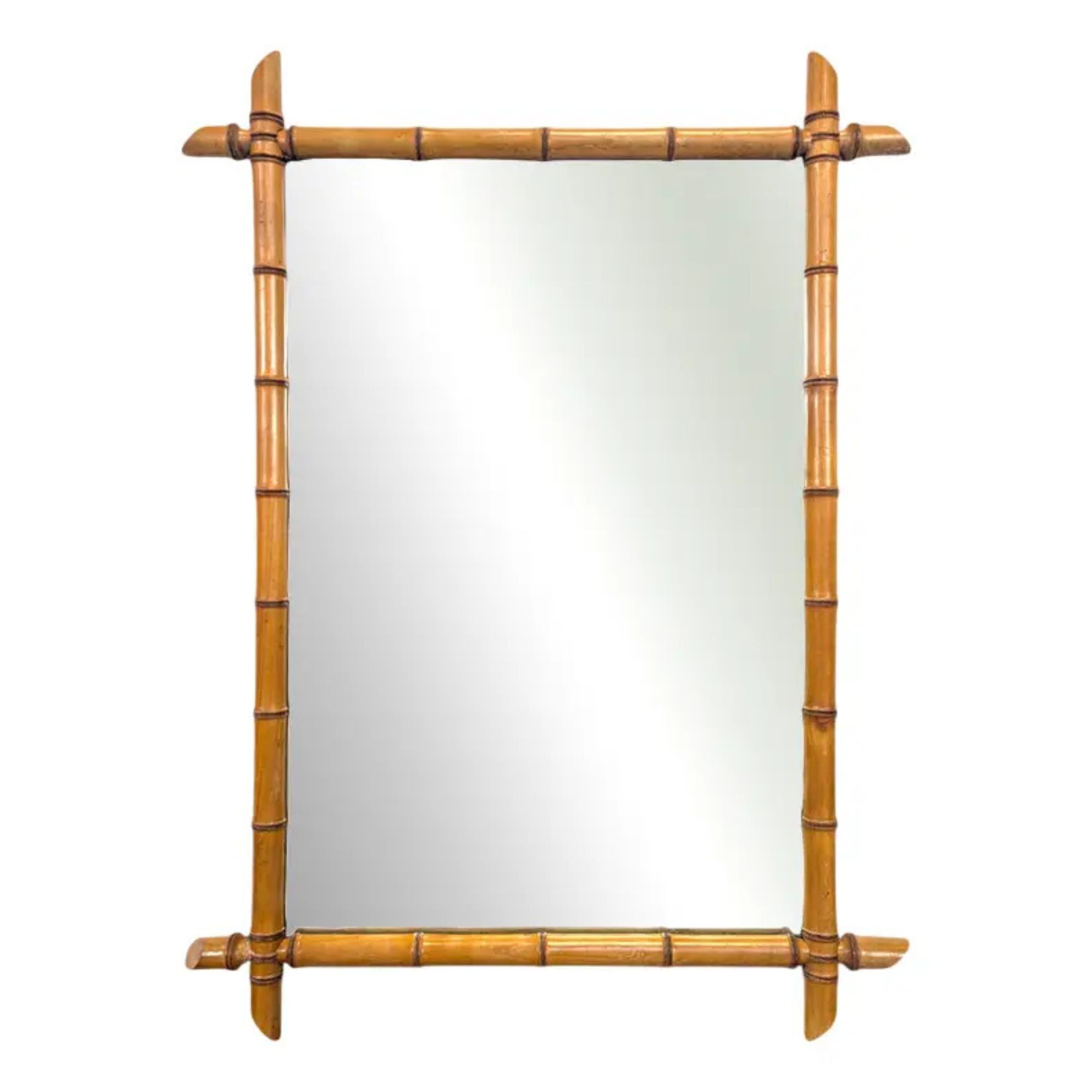How can you make a room look wider? 10 designer tips to 'expand' your space with color, layout and decor
Decorating a narrow room is an age-old struggle, but these ideas will help make a confined space feel wider and welcoming

Chiana Dickson

- 1. Work with patterns for spatial illusions
- 2. Take the paint to the ceiling
- 3. Color drench woodwork and doors
- 4. Go darker in a long narrow space
- 5. Zone your space with rugs
- 6. Light the space liberally
- 7. Strategically place mirrors to lighten and widen the space
- 8. Hang curtains high up
- 9. Don't over fill the space with furniture
- 10. Be smart with storage to reduce visual clutter
Whether you're stuck with an awkwardly shaped room or trying to make the most out of a rather narrow pass-through space, there are several ways to visually expand a room without compromising its style.
Much like when tackling any small room, the careful balance of pattern, scale, layout, and color will ensure that a cramped or tight space feels and looks wider and more welcoming. Where you can't physically create more space, you can consider making decorative changes to make the room feel spatially larger and more open.
In an effort to understand the tricks of the trade, we turned to interior designers and color experts to learn how to make any narrow room look wider.
How to make a narrow room look wider
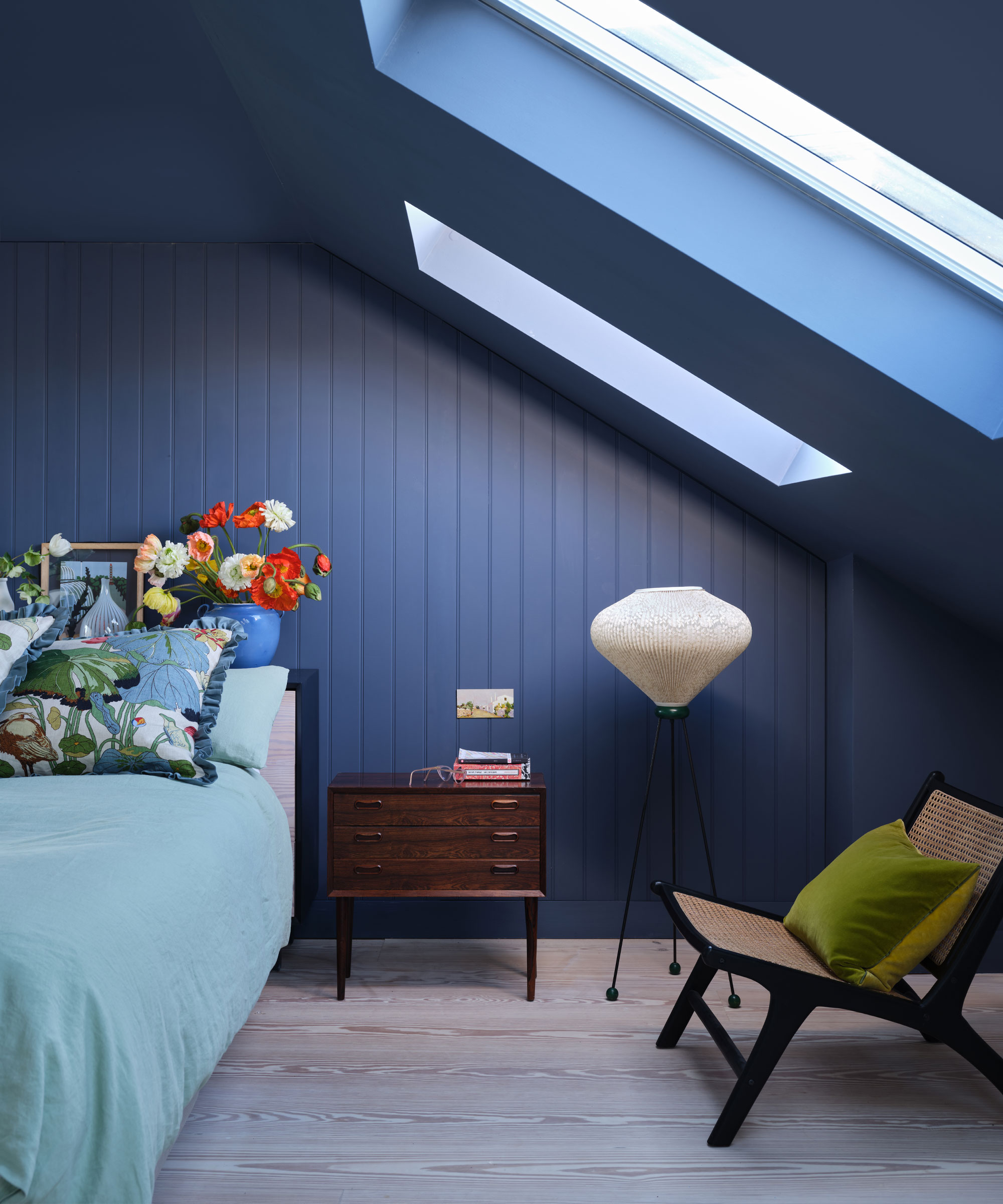
In a narrow space, clever use of visual tricks such as pattern, paint, and furniture is crucial if you do not want to sacrifice style for illusion. No matter if you are working with long living room ideas, narrow entryway ideas, or even trying to expand your narrow kitchen ideas, these tips could help you make a space that works well for you.
Color plays an important part in any scheme, big or small, but it can majorly elevate the feel of a narrow room. Speaking with paint and color experts, they divulged exactly what shades and techniques work best in these more restricted areas and what color mistakes you should avoid.
And of course, while layout is more restricted in a narrow room, there are certain ways you can arrange your furniture to make the space feel more practical and spacious. Consider the arrangement of your pieces in accordance with your color scheme, for example, if you've opted for a colored accent wall to make the room appear larger, consider positioning furniture to allow the eye to face this area.
Look to the furniture and decor too. There are some decorating ideas that can make all the difference to a narrow space. The right lighting, purposeful placement of soft furnishings, and certain wall decor will help your room feel much less restricted and more purposeful. Considering which furniture styles, sizes, and materials are important in a narrow room too, these pieces can take a once-restricted space and make it feel intentional, inviting, and far more roomy.
Design expertise in your inbox – from inspiring decorating ideas and beautiful celebrity homes to practical gardening advice and shopping round-ups.
1. Work with patterns for spatial illusions

While you may not initially consider selecting a patterned wallpaper for a narrow room, it's a surprisingly effective way to decorate this space.
‘Wallpaper ideas are a wonderful tool for creating an illusion of depth, place a bright, large-scale wallpaper design at the end of a long, narrow space to draw the eye, making the end wall appear closer,’ suggests Kate French, creative director of wallpaper specialists, Dado. ‘Designs with a horizontal aspect within the pattern will also create the illusion of width, again bringing the appearance of increased width to a wall, hang horizontally, or opt for a stripe if you’re looking to create the appearance of height.’
Using lines in interior design is an age-old method for playing with the proportions of a room and can be easily applied through wallpaper, as can be seen in this beautiful small bedroom.
2. Take the paint to the ceiling
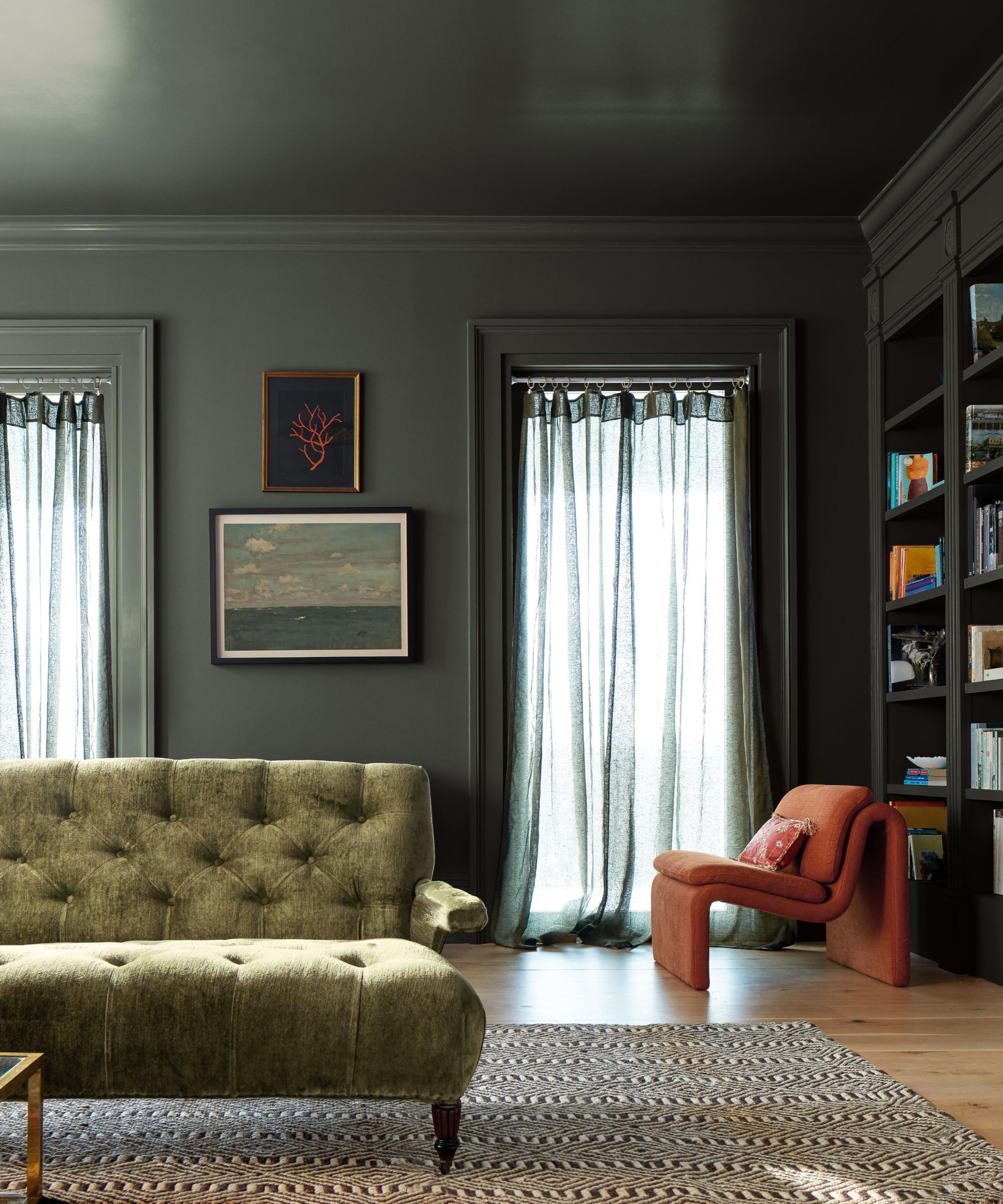
Ceiling paint ideas are sometimes neglected in comparison to the time we put into deciding on a wall color. However, painting the 'fifth wall' not only creates a focal point, but can make a narrow room appear visually wider, as its circumference has been blurred, creating an illusion of more space.
'A simple technique to help the room feel wider is to take the same color over the walls, ceiling, and trim, this helps to blur the natural height of your walls with some soft color saturation,' says Patrick O’Donnell from Farrow & Ball.
Ruth Mottershead, creative director at Little Greene, supports this and explains, 'Including the ceiling in your design scheme has become increasingly important. It is often the largest expanse of color you will have in a space, so it will have a big impact on how the room will feel.'
However, if painting the ceiling feels a step too far in your narrow space, Helen Shaw from Benjamin Moore advises instead to 'paint a strong color up to picture rail height, with white above. This makes the ceiling feel further away and the room less claustrophobic and narrow.'
3. Color drench woodwork and doors

Take it a step further than just painting the ceiling and color drench the whole room in the same shade. Justyna Korczynska, color expert and designer at Crown Paints, says, 'Color drenching, especially when using darker colors, works best in small spaces. By enveloping a small room in color, the focus shifts from noticing the size of that space to just appreciating the shade that surrounds us.'
Justyna adds, 'Rich, bold colors work best when following the color-drenching trend. If you feel brave, you can go for a really dark shade for a strong, dramatic effect, but it's better to avoid overly bright shades, as they could become overpowering, especially in smaller spaces. When using more than one color, choose shades with similar intensity, or use the same color in lighter and darker shades – harmony is very important, so avoid putting together two very contrasting shades.'
'Injecting colors we love into our homes can give us a boost of positive energy and improve comfort in the spaces we live in. Color drenching is a simple and effective way to achieve a dramatic transformation of the bleakest of rooms in our homes.'
4. Go darker in a long narrow space
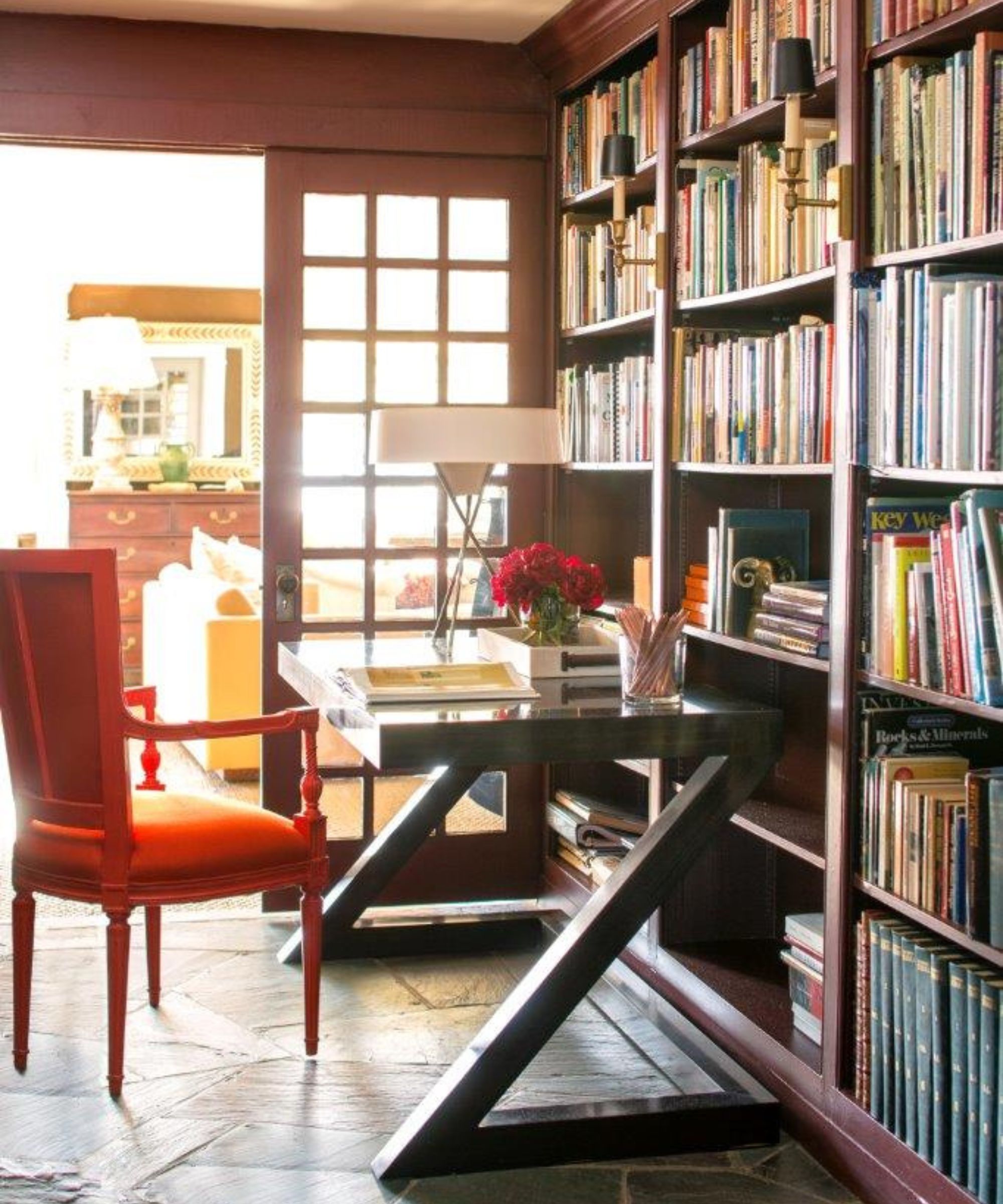
It is true, darker colors can often make a space feel more cocooned and closed in, however, when it comes to making a room feel wider, dark paints can actually be a good option to consider.
'If your narrow room is dark, white is not your friend here – so play with darker colors. While this may feel counterintuitive, some dark colors will recess and you will create a cozy and comforting place to dwell,' says Patrick. You want the space to feel inviting rather than boxy, white paint will highlight its size in a stark and clinical way. More dramatic, darker shades can distract you from the size of the room, consuming you in a striking atmosphere of color and character.
'Paint is a clever and simple way to change the perception of space in a room. If you use a darker color on the end wall and a paler hue on the others, your eye will automatically be drawn right through the space, making the area feel larger,' says Helen.
If a dark shade feels a little bold, Patrick agrees that focusing on the end wall will give the room more depth. He adds, 'To widen a narrow room, paint the end wall a couple of shades darker than the other three, this will help the former advance and help to ‘square’ up the space.'
5. Zone your space with rugs

While narrow rooms can feel like more work to design, there are also some advantages. Many of us use these non-conventionally shaped rooms for multiple uses, as the length means you can have two alternate areas designed for different things. The most efficient way to do this is to compartmentalize the room with effective zoning.
Zoning in interior design can make a small space feel bigger as multiple areas have been created, creating an illusion that the room is indeed larger, as it allows for ample activities. One simple way to zone a small or narrow room is to use multiple rugs. As Charu Gandhi, founder of Elicyon explains, ‘Rugs are such an opportunity to create an abstract piece of art, but also to create zones within a space.'
'A narrow room can also be made to look larger with the help of a large, impressive carpet,’ adds Johanna. ‘However, you should avoid a long carpet, as it would emphasize the narrow space.’
6. Light the space liberally

Narrow rooms can be tricky to light as they can often be darker spaces that don't get a ton of natural light. However, finding good lighting solutions is key as the right scheme can make a room look wider.
‘Narrow rooms may seem small, so in such spaces, you should always maximize natural light, which makes the room look bigger and more attractive,’ explains Johanna. ‘If the window in the room is on a narrow wall, you should place the curtains away from the front of the window to the sides, the entire width of the wall. This gives the impression of expanding the space.’
To supplement natural light, consider using pendant lights, especially in narrow bedrooms, as opposed to table lamps, to add functional task lighting. Scattering sconces will illuminate certain areas of the room and give it more warmth and character.
7. Strategically place mirrors to lighten and widen the space
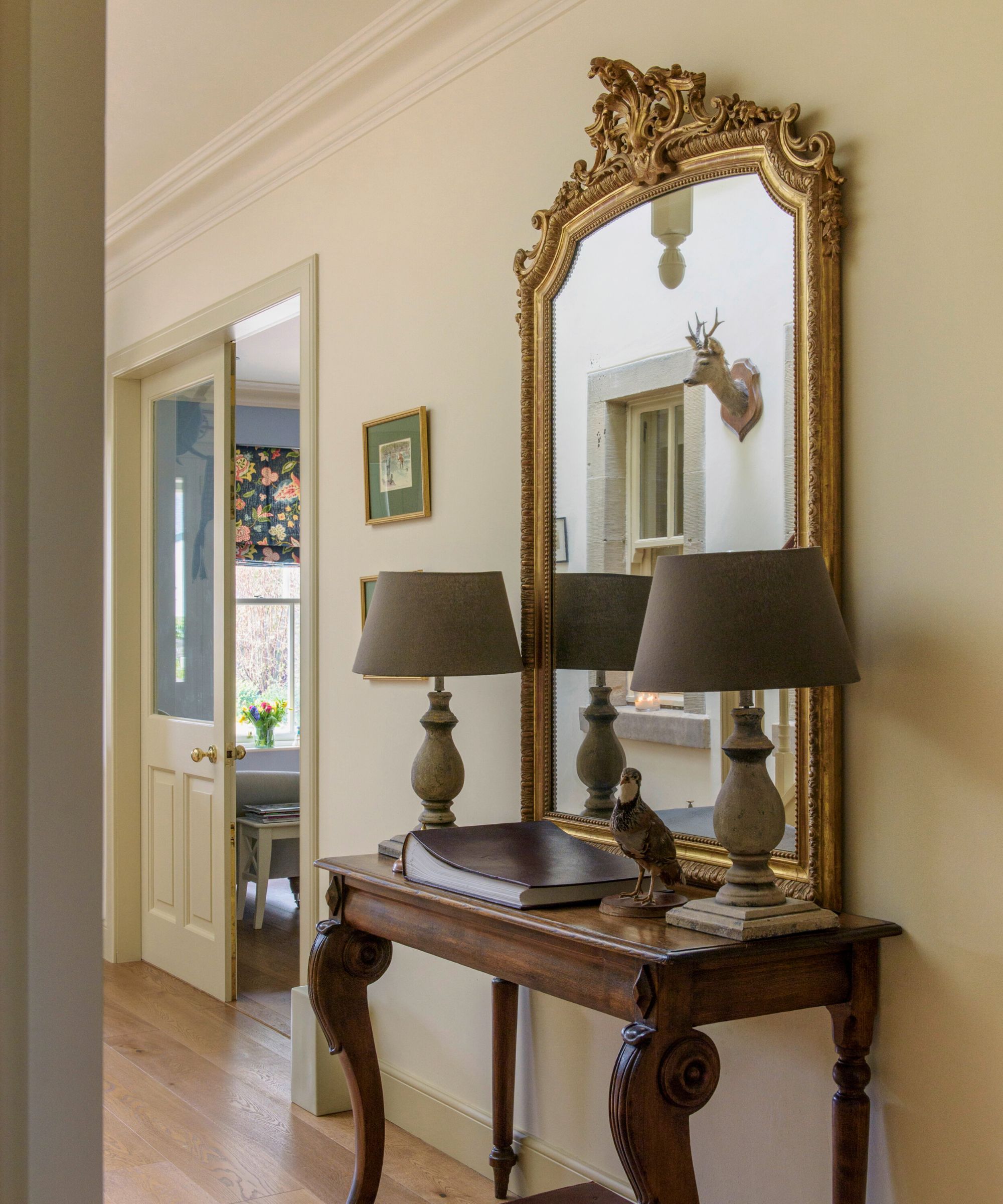
Decorating with mirrors to visually distort a space is nothing new, and you will likely hear this advice repeated throughout the design world. Mirrors are one of the most effective ways of expanding space, adding depth and character, so it is an ideal solution to making a narrow room feel wider.
Whether it's an antique floor-to-ceiling mirror hung at the heart of your space or a statement mirror wall that covers one side of the room, mirrors can make all the difference to a narrow space as they bounce light around and create the illusion of more space.
8. Hang curtains high up

Although adding height to a room may not seem to address the narrowness at first, drawing the eye upwards can distract from the room's overall width and give the appearance of spaciousness.
‘Consider hanging curtains high up towards the ceiling to give the impression of height in a room, and making them long enough to pool on the floor,’ suggests Charlotte Rey, of Campbell-Rey. ‘If you’re having curtains made, a pelmet in an interesting shape is a fun way to make something special. The house or room itself can inform the shape, whether referencing a historical detail or following the architectural proportions.’
Another way to make ceilings look higher is to emphasize existing architectural features, such as beams or intricate plasterwork, or consider a statement ceiling to introduce a new and interesting focal point. The opportunities in a narrow room are limited, so highlighting its good points will make the space feel harmonious instead of awkward.
9. Don't over fill the space with furniture

Much like making a small room look bigger, furniture layout is key to creating the illusion of a wider space. Quite often, space is a luxury in narrow rooms, with large, blocky furniture cramping the room and creating the appearance of a much narrower space.
Ensure furniture selections are chosen in scale with the space. Lower-backed items or furniture with exposed legs create airiness and reduce their visual weight, allowing light to traverse the space more easily and create the illusion of a wider room. You want to avoid bulky pieces like armchairs and sofas, as these will take up too much room and add to the narrow feel of the space.
Foldable furniture that can be stored away when not in use is a clever use of space as it can be made smaller when needed and increases the amount of usable floor space and, in turn, makes a narrow room appear wider.
10. Be smart with storage to reduce visual clutter

When making a narrow room look wider, integrating storage ideas such as built-ins can help reduce visual clutter as well as look purposeful.
Clutter can cramp up even the largest of rooms, so hiding these items away can automatically increase the sense of space and widen the room. Whether it's built-in cabinets or an open bookshelf, these practical solutions allow you to use the space to the fullest without the appearance of it being filled.
‘I take great satisfaction in enhancing small spaces, which is ironic because I’ve spent most of my career designing very large ones! Somehow, I get more pleasure out of the ingenuity needed for the little spaces,’ says Guy Goodfellow. ‘Build storage upwards to draw the eye towards the ceiling, and use mirrored cabinetry to help light bounce around the room,’ he suggests.
Narrow rooms can be entirely reimagined with the right paint choices, decor, layout, and furniture. It's all about creating illusions and elevating the space you have, without taking it to the point that it feels overdone or awkward. In a narrow room, you want to feel wider, encourage horizontal sight lines. So, as you are decorating, keep checking in with how the room is looking. Where is the eye being drawn to? Is there something that's drawing your eye down the space to make it feel narrower? Or a piece of furniture that's cutting across a natural sight line? In a narrow room, you want to feel wider, encourage horizontal sight lines.

I am the Interior Design News Editor at Homes and Gardens, covering mainly US-based designers and trending news stories. My love for interiors began when I interned in an interior design studio, working on commercial and private spaces. My passion grew while working in production, where I sourced beautiful locations for photoshoots and campaigns. Outside of work, I enjoy collecting antique decor and mid-century furniture for my home.
- Chiana DicksonContent Editor











